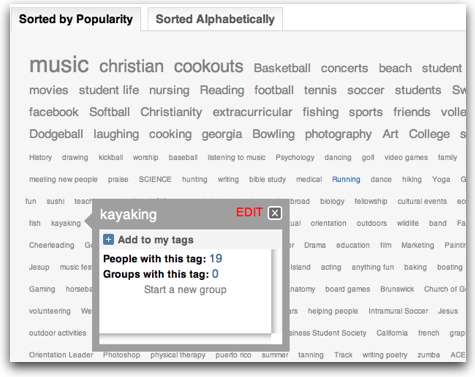Yesterday, USA Today reported on how student participation in co-curricular (outside the classroom) activities leads to higher GPAs and a more satisfied social life.
“College experts say students who participate in extracurricular activities are more engaged in the college experience, and benefits can be seen both in and outside the classroom.”
The article’s focus wasn’t about participation in standard clubs such as German and Chess, but rather in more obscure clubs such as Michigan’s Squirrel Club or Harvard’s College Cube Club. In other words, the long tail of student interests.
But ask any student activities department how they would feel about a 50% increase in registered campus clubs and you’d experience a face of joyous panic.
Supporting the long tail means the position of student activities also has to shift from gate keeper to facilitator. Instead of registering, formalizing, and monitoring every organization, support a platform that allows students to self-organize around an infinite number of interests and act as the facilitator to introduce like minded students together.
“Seth have you met Randy, you both like White Water Canoeing”
Allowing bizarre peer-to-peer learning communities to form through the long tail will not only increase engagement, but also will lead to longer lasting friendships because the commonality of “we’re the only ones who love XYZ” is already established. As John Gardner, president of the John N. Gardner Institute for Excellence in Undergraduate Education said in the USA Today article:
“Friendship formation is task No. 1 for most students. If you don’t make friends, you’re lonely, you’re anxious, you feel sort of adrift.”
New tools are supporting schools as they shift towards a more decentralized peer-to-peer engagement model.
Through the schools using our Red Rover campus directory tool, we can actually visualize, and for the first time quantify, what the long tail of engagement looks like.





